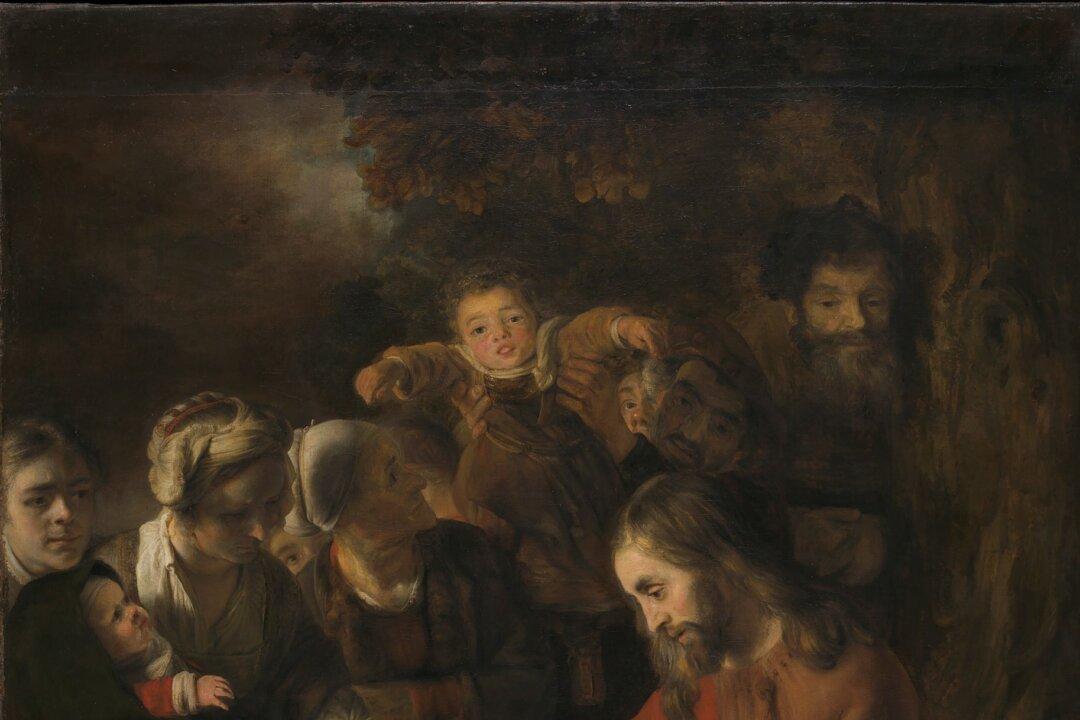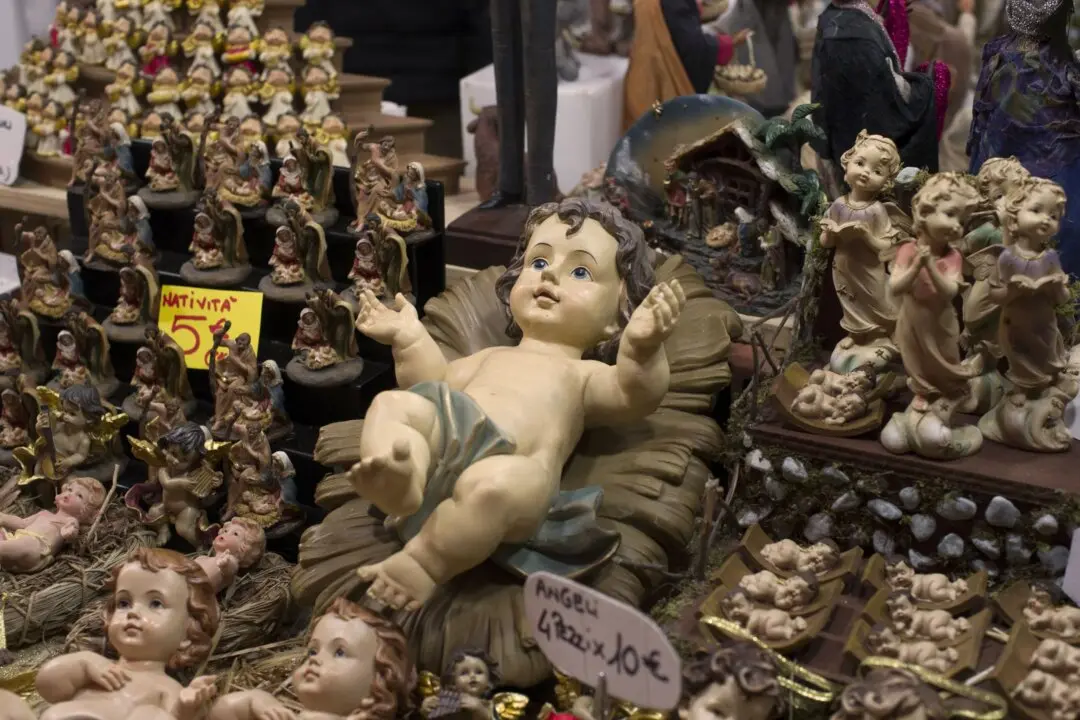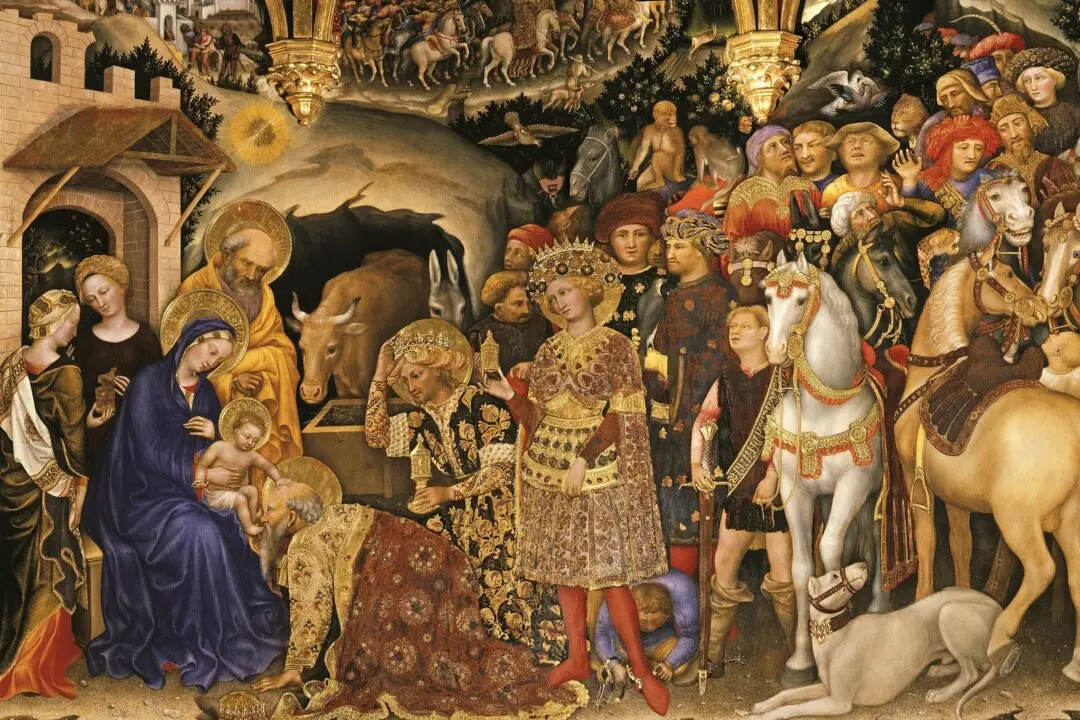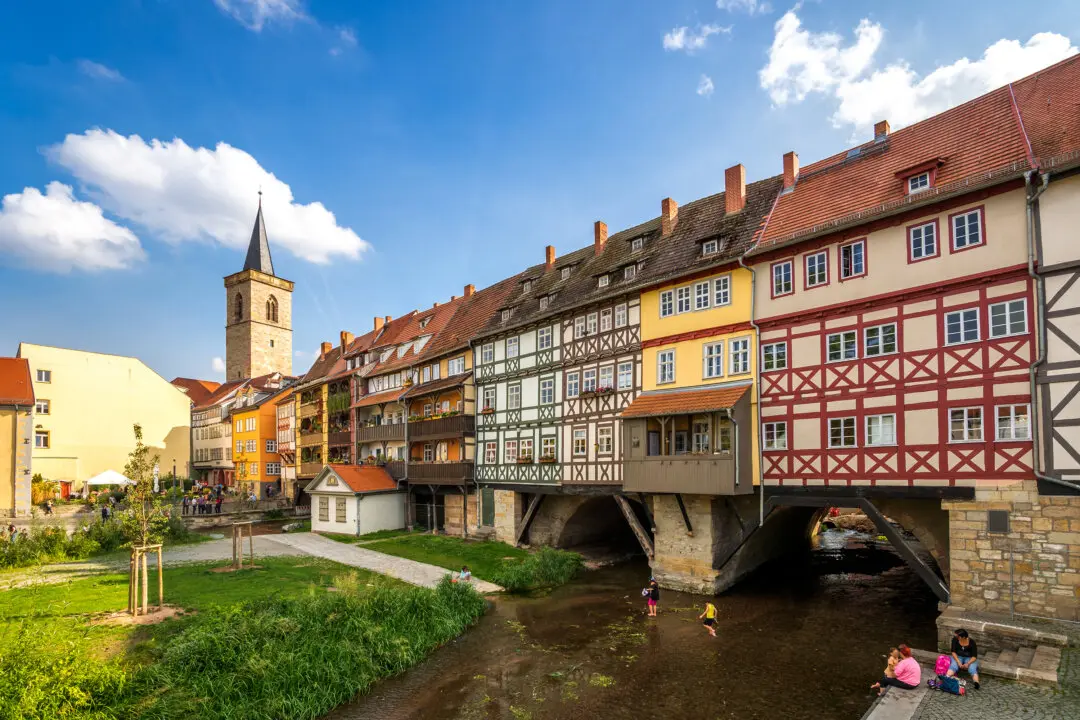In the painting “Christ Blessing the Children,” earthly browns and pockets of red dominate the divinely touching scene of Jesus blessing children whom their parents so eagerly present to him.
The girl being blessed by Christ appears to hold an apple, perhaps symbolic of the original sin when Adam and Eve ate the forbidden fruit from the Tree of the Knowledge of Good and Evil. The girl seems distracted by something in the distance. As she appears to pull away from Christ, he gently pulls her toward his divine blessing. These subtle gestures allude to the fact that the sins inherent in the human world pull us away from our innate divinity. Only faith in the divine offers us salvation.






